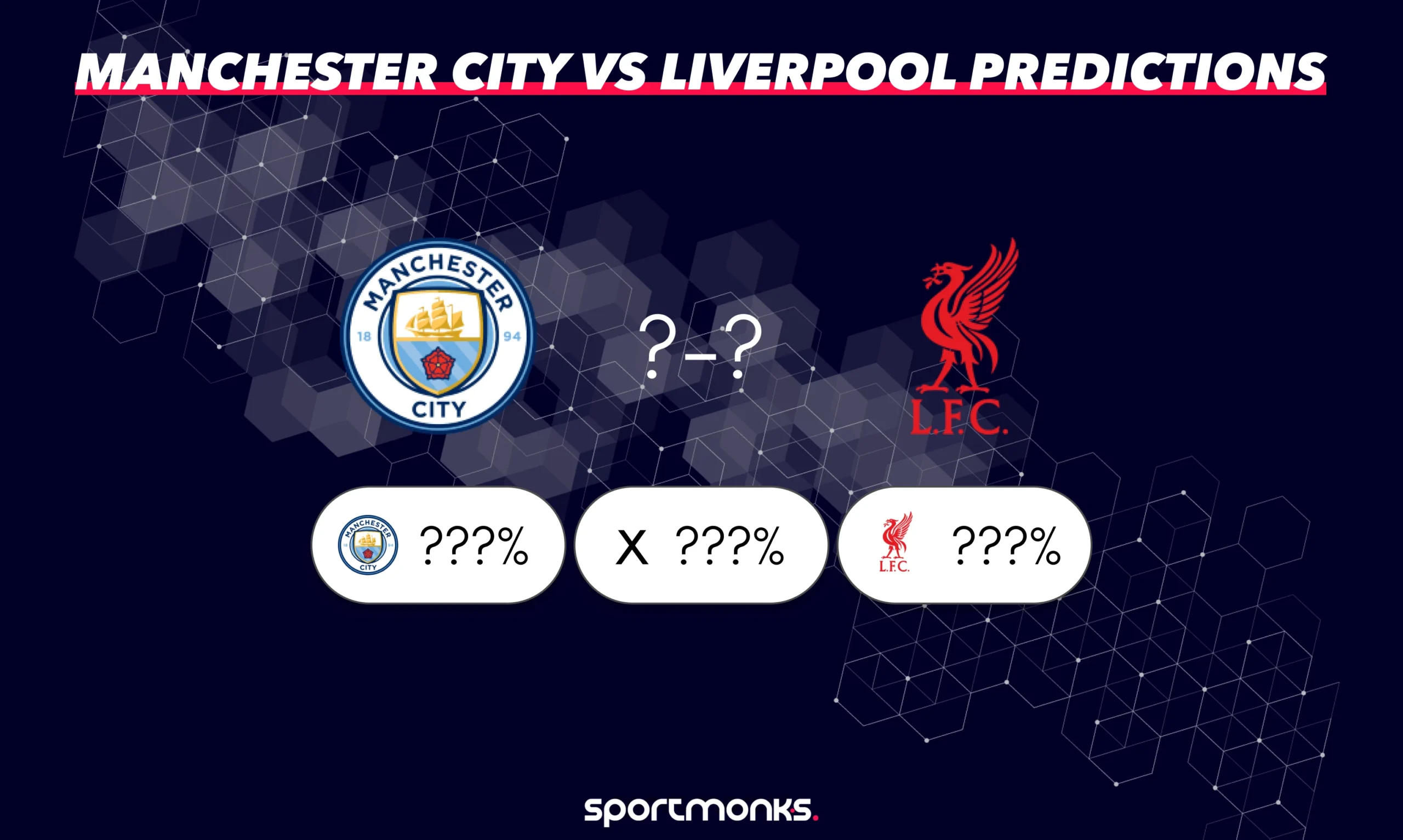
Contents
Football data can be used in a variety of ways. For example, data can be used to make statistical analyses for scouting, preventing injuries, and improving the qualities of individual players or specific and overall qualities of the team. In short, football data and mainly football statistics are a significant part of everyday life at professional football companies and clubs.
Football statistics are an integral part of the game. They provide valuable insights into the performance of teams and individual players and help fans, analysts, and coaches make informed decisions about their strategies and tactics. In recent years, the availability and quality of football statistics have greatly improved, thanks to the advancements in technology and data analytics. In this blog, we will explore the importance of football statistics and how they are used in the game.
Popular football statistics
To start with, let’s look at some of the most vital football statistics that are commonly used:
Goals: This is the most crucial statistic in football, as it ultimately decides the game’s outcome. Goals scored, conceded, and goal difference are critical metrics closely monitored by fans and coaches.
Shots: The number of shots a team or player takes provides insights into their attacking prowess. Shots on target and shot accuracy are important metrics that help gauge the effectiveness of a team’s attacking play.
Passes: The number of passes a team or player makes indicates their ability to retain possession and control the game. Pass accuracy is another important metric that reflects the team’s technical ability.
Tackles: The number of tackles a team or player makes shows their defensive capabilities. The success rate of tackles is another key metric that reflects the team’s ability to win the ball back from the opposition.
Fouls: The number of fouls a team or player commits can indicate their discipline and aggression levels. The number of fouls a team or player suffers can also indicate their vulnerability to rough play.
Possession: The percentage of possession the teams have during the match.
These are just a few examples of the many available football statistics. In addition to these, advanced statistics such as Expected Goals (xG), Expected Assists (xA), and Expected Points (xP) are also gaining popularity in the world of football.

Limits and availability
- Limitations: Football statistics have limitations and should not be solely relied upon to make decisions. For example, statistics do not capture the subjective factors that can influence a game, such as momentum shifts and individual moments of brilliance. In addition, specific statistics such as tackles and interceptions can be misleading if not analysed with other factors such as position and tactical instructions. Another example is when an attacker loses the ball half the time. However, he created many changes, gave assists and even scored a goal. Based on one statistic, he plays poorly, but in combination with other stats and other factors, you might think he is the best player on the field.
- Availability and reliability: The availability and reliability of football statistics can vary depending on the league and level of competition. For example, statistics for the top European leagues are more readily available and reliable than those for lower leagues and non-professional leagues. In addition, the accuracy of statistics can also be affected by factors such as human error and interpretation. There are a lot of Football data providers that offer data. For example, via a Football API as Sportmonks does. The data providers compete to cover as many leagues as possible with the highest possible data quality. Competition makes this market even greater and more intriguing than it already is. Because of the availability of football statistics, it has been expensive for a long time. However, Sportmonks thinks Football data should be available for everyone, so we started to collect data and offer it to the world for a fair price.
- Emerging trends: As football statistics evolve, new trends and metrics emerge. For example, data analytics has led to the development of new metrics, such as pressing intensity and ball progression. These metrics provide insights into the effectiveness of a team’s pressing and attacking play. xG, as mentioned earlier, is one of the statistics that has become increasingly popular. That is why Sportmonks is also working hard to implement the xG to keep up with the latest trends and stay innovative. Who knows what the following statistic is that data analysts will come up with that might put the whole game of football upside down? Sportmonks is eager to find out and provide all the latest statistics.

Football statistics are a powerful tool for analysing and understanding the game. They provide valuable insights into the performance of teams and players and help inform decision-making in player recruitment, tactics, and sports betting. However, it is essential to use statistics responsibly and contextualistically and recognise their limitations and potential biases.
Football statistics importance
So, why are football statistics so crucial? Here are some reasons:
Fan engagement: Football statistics are great for engaging with fans. Fans love to analyse and discuss statistics, which gives them a deeper understanding of the game.
Performance analysis: Football statistics provide a detailed analysis of a team’s or player’s performance. Coaches and analysts can use this information to identify strengths and weaknesses and adjust their strategies and tactics accordingly.
Player recruitment: Football statistics are also used extensively in player recruitment. Clubs use data analysis to identify potential transfer targets and determine their value in the transfer market.
Betting: Football statistics are also a crucial component of sports betting. Bettors use statistics to make informed decisions about their wagers and improve their chances of winning.
Historical data: Football statistics are used to analyse current performance and reflect past games and seasons. Historical data can provide insights into a team’s or player’s performance and help identify trends and patterns.
Contextual analysis: Football statistics are not meant to be analysed in isolation. They must be contextualised and analysed with other factors such as the opposition, game conditions, and tactical setup. A simple example is that a team with a high pass accuracy rate may not necessarily be playing well if they only pass the ball backwards and sideways.
In conclusion, football statistics have become an essential part of the game. They provide valuable insights into the performance of teams and players and help make informed decisions about strategies and tactics. With the continued advancements in technology and data analytics, we can expect football statistics to become even more sophisticated and insightful.
Are you inspired to start using football statistics yourself?
You can start building your application to compare all football statistics worldwide by joining Sportmonks. You can start testing all data features and football statistics for free by registering at Mysportmonks. This will automatically activate the free plan on your account. Start by creating an API token, get to the documentation pages and find your way in the sea of sports data. The free plan offers access to all standard Scottish Premiership and Danish Superliga features.
However, if you want to test the data more broadly, subscribe to one of our default or a custom plan. This way, you will activate a 14-day free trial for any plan with access to other leagues. Depending on the plan you choose, you will have access to all the football statistics of the Champions League, Premier League, La Liga, Serie A, Bundesliga or any other league in the world. Sportmonks covers over 2,000 leagues. See below a live version of our Football Widget based on our API.
How to use Sportmonks’ football statistics
First things first, there are many different football statistics. We can talk about goals, tackles, possession, xG, crosses, and more. All of the statistics are divided into groups. The groups are as follows, season statistics, fixture statistics, team statistics, player statistics, referee statistics, coach statistics, and more.
Season statistics
Sportmonks calculates a wide range of Football statistics for you, like the number of matches, matches played, goals scored, clean sheets, yellow cards, average goals per minute, etc. There are multiple ways to retrieve season statistics, but the most commonly used is the Season by ID endpoint with the statistics include:
https://api.sportmonks.com/v3/football/seasons/{season_id}?api_token=YOUR_TOKEN&include=statistics
Let’s take a look at the 2022/2023 season of the Scottish Premiership (season id 19735):
https://api.sportmonks.com/v3/football/seasons/19735?api_token=YOUR_TOKEN&include=statistics
{
"data": {
"id": 19735,
"sport_id": 1,
"league_id": 501,
"tie_breaker_rule_id": 171,
"name": "2022/2023",
"finished": false,
"pending": false,
"is_current": true,
"starting_at": "2022-07-30",
"ending_at": "2023-04-22",
"standings_recalculated_at": "2023-03-03 00:07:44",
"games_in_current_week": false,
"statistics": [
{
"id": 46371,
"model_id": 19735,
"type_id": 34,
"relation_id": 53,
"value": {
"count": 194,
"percentage": 12.08,
"team_most_corners_id": 53,
"team_most_corners_name": "Celtic"
},
"type": "array"
},
{
"id": 46381,
"model_id": 19735,
"type_id": 188,
"relation_id": null,
"value": {
"total": 198,
"played": 159,
"percentage": 80.3
},
"type": "array"
},
//And more
Fixture statistics
Fixture statistics are available for the teams participating in the fixture and the players. You can access a fixture via one of our fixtures endpoints. For this example, we will be using the Fixtures by ID endpoint.
Let’s take a look at the match statistics for Celtic vs Rangers (id: 18535517) by using the statistics include:
https://api.sportmonks.com/v3/football/fixtures/18535517?api_token=YOUR_TOKEN&include=statistics
The statistics include returns the match statistics for both teams. Our API returns many values, but what do they mean exactly? And how can you display the type of statistic?
{
"data": {
"id": 18535517,
"sport_id": 1,
"league_id": 501,
"season_id": 19735,
"stage_id": 77457866,
"group_id": null,
"aggregate_id": null,
"round_id": 274719,
"state_id": 5,
"venue_id": 8909,
"name": "Celtic vs Rangers",
"starting_at": "2022-09-03 11:30:00",
"result_info": "Celtic won after full-time.",
"leg": "1/1",
"details": null,
"length": 90,
"placeholder": false,
"last_processed_at": "2023-03-02 17:47:38",
"has_odds": true,
"starting_at_timestamp": 1662204600,
"statistics": [
{
"id": 5914502,
"fixture_id": 18535517,
"type_id": 86,
"participant_id": 53,
"data": {
"value": 6
},
"location": "home",
"type": {
"id": 86,
"name": "Shots On Target",
"code": "shots-on-target",
"developer_name": "SHOTS_ON_TARGET",
"model_type": "statistic",
"stat_group": "offensive"
}
},
{
"id": 5914520,
"fixture_id": 18535517,
"type_id": 78,
"participant_id": 62,
"data": {
"value": 17
},
"location": "away",
"type": {
"id": 78,
"name": "Tackles",
"code": "tackles",
"developer_name": "TACKLES",
"model_type": "statistic",
"stat_group": "defensive"
}
},
//And more
Team statistics
Next to the fixture and season fixtures, you can request team statistics. You can use the Team by ID endpoint with the statistics include. For example, for Rangers (id: 62)
https://api.sportmonks.com/v3/football/teams/62?api_token=YOUR_TOKEN&include=statistics
Now, just like in the previous section, you need to add details to retrieve the statistics values and type to retrieve the name of the statistics:
https://api.sportmonks.com/v3/football/teams/62?api_token=YOUR_TOKEN&include=statistics.details.type
{
"data": {
"id": 62,
"sport_id": 1,
"country_id": 1161,
"venue_id": 8914,
"gender": "male",
"name": "Rangers",
"short_code": "RAN",
"image_path": "https://cdn.sportmonks.com/images/soccer/teams/30/62.png",
"founded": 1873,
"type": "domestic",
"placeholder": false,
"last_played_at": "2023-02-26 15:00:00",
"statistics": [
{
"id": 42108,
"team_id": 62,
"season_id": 821,
"has_values": true,
"details": [
{
"id": 371396,
"team_statistic_id": 42108,
"type_id": 88,
"value": {
"all": {
"count": 4,
"average": 1,
"first": null
},
"home": {
"count": 2,
"percentage": 50,
"average": 0.67,
"first": null
},
"away": {
"count": 2,
"percentage": 50,
"average": 2,
"first": null
}
},
"type": {
"id": 88,
"name": "Goals Conceded",
"code": "goals-conceded",
"developer_name": "GOALS_CONCEDED",
"model_type": "statistic",
"stat_group": "defensive"
}
},
Player statistics
Last but not least, you can retrieve player statistics. The fundamentals and steps are the same as for the team endpoint. First, you can use one of our players’ endpoints. For example, the Player by ID endpoint:
https://api.sportmonks.com/v3/football/players/{id}?api_token=YOUR_TOKEN
Let’s say you want the statistics of James Tavernier (id 758). You can use the statistics include:
https://api.sportmonks.com/v3/football/players/758?api_token=YOUR_TOKEN&include=statistics
{
"data": {
"id": 758,
"sport_id": 1,
"country_id": 462,
"nationality_id": 462,
"city_id": null,
"position_id": 25,
"detailed_position_id": 154,
"type_id": 25,
"common_name": "J. Tavernier",
"firstname": "James",
"lastname": "Tavernier",
"name": "James Tavernier",
"display_name": "James Tavernier",
"image_path": "https://cdn.sportmonks.com/images/soccer/players/22/758.png",
"height": 182,
"weight": 75,
"date_of_birth": "1991-10-31",
"gender": "male",
"statistics": [
{
"id": 27324842,
"player_id": 758,
"team_id": 62,
"season_id": 825,
"position_id": 25,
"jersey_number": 2,
"details": [
{
"id": 23799175,
"player_statistic_id": 27324842,
"type_id": 52,
"value": {
"total": 1,
"goals": 1,
"penalties": 0
},
"type": {
"id": 52,
"name": "Goals",
"code": "goals",
"developer_name": "GOALS",
"model_type": "statistic",
"stat_group": "offensive"
}
},
{
"id": 2926412,
"player_statistic_id": 27324842,
"type_id": 59,
"value": {
"in": 1,
"out": 1
},
"type": {
"id": 59,
"name": "Substitutions",
"code": "substitutions",
"developer_name": "SUBSTITUTIONS",
"model_type": "statistic",
"stat_group": "overall"
}
},
//And more






